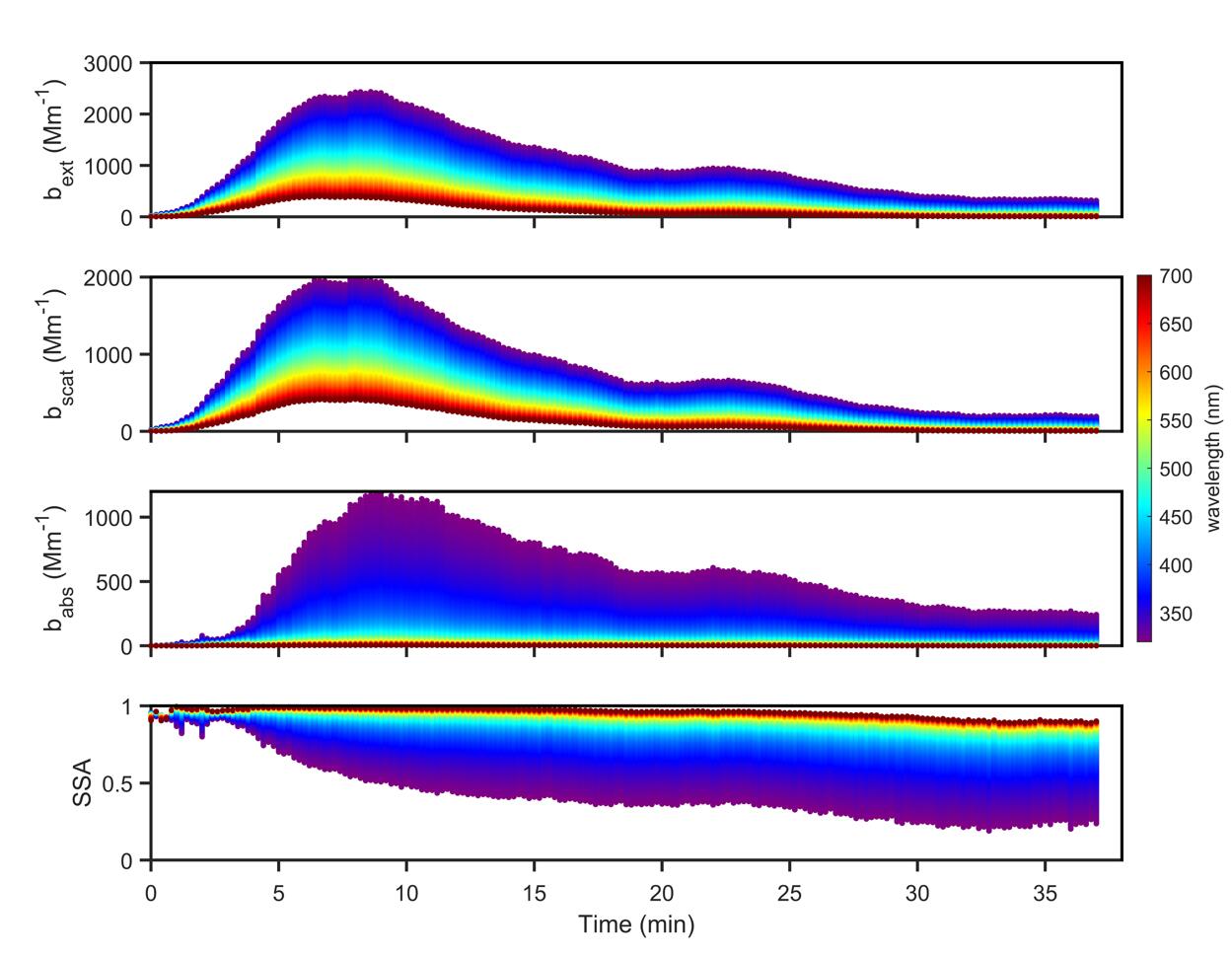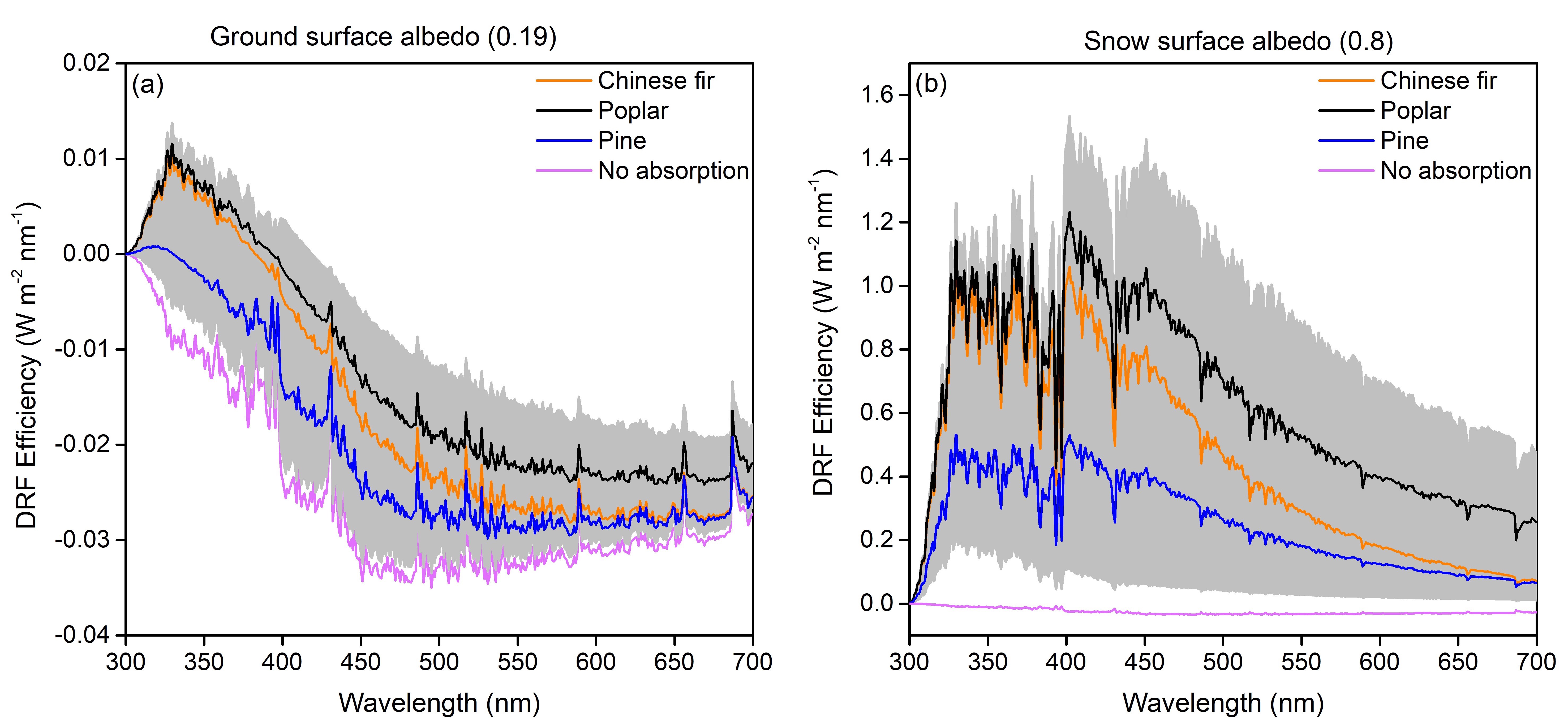
Recently, the research group of Professor ZHANG Weijun from Anhui Institute of Optics and Fine Mechanics (AIOFM), Hefei Institutes of Physical Science (HFIPS) , Chinese Academy of Sciences (CAS), found that a decrease of about 35% of SSA at 365-405 nm would cause a 46% decrease in direct radiative forcing (DRF) efficiency at ground albedo.
The relevant research work was published in Science of the Total Environment.
Brown carbon (BrC) is an important light-absorbing carbonaceous aerosol that absorbs radiation in the near-ultraviolet and visible ranges very well. Its ability to absorb radiation depends on the wavelength, which has a big effect on the balance of radiation at the local and global levels. BrC mist is made when BrC is released into the air and then oxidized again. Biomass burning is a major source of main BrC in the air. The spectral properties of BrC from burning biomass is uncertain due to the limitations of the testing methods, which leads to great uncertainty in BrC radiative forcing assessment.
In this study, the research team employed a four-wavelength broadband cavity-enhanced albedometer that they had developed.
The albedometer was operated at four independent wavelengths: 365, 405, 532, and 660 nm.
The albedomete can be used to measure the extinction coefficient, scattering coefficient, absorption coefficient, and single scattering albedo (SSA) of BrC emitted from wood pyrolysis. These optical parameters obtained online can effectively reflect the changes in aerosol during biomass pyrolysis.
"Based on the above multi-wavelength in-situ measurement, we developed the SSA spectrum retrieval method," said ZHOU Jiacheng, who invented the albedometer, "and we successfully obtained the broad spectral characteristics of the primary BrC in the range of 300-700 nm with it."
The SSA spectrum can be used to evaluate the DRF of primary BrC. The DRF efficiency over ground of various primary BrC emissions increased from 5.3 % to 68 % as compared to the non-absorbing organic aerosol assumption.
This study emphasized the importance of BrC spectral characteristics in the evaluation of radiative forcing, which has important scientific significance for the accurate evaluation of aerosol climate effects.
This research was supported by the National Natural Science Foundation of China, the Natural Science Foundation of Anhui province, the Youth Innovation Promotion Association CAS, and the HFIPS Director's Fund.

Spectral characteristics of extinction coefficient, scattering coefficient, absorption coefficient, and SSA of BrC aerosol from biomass pyrolysis. (Image by ZHOU Jiacheng)

The direct radiative forcing of BrC aerosol above ground surface albedo and snow surface albedo. (Image by ZHOU Jiacheng)
Broadband spectrum characteristics and radiative effects of primary brown carbon from wood pyrolysis